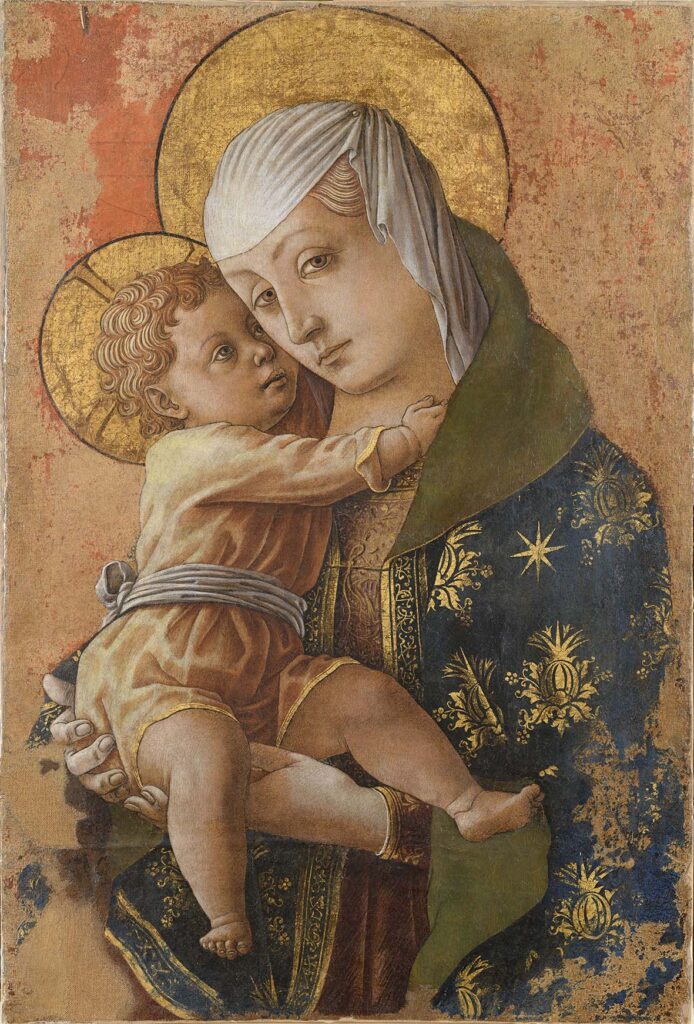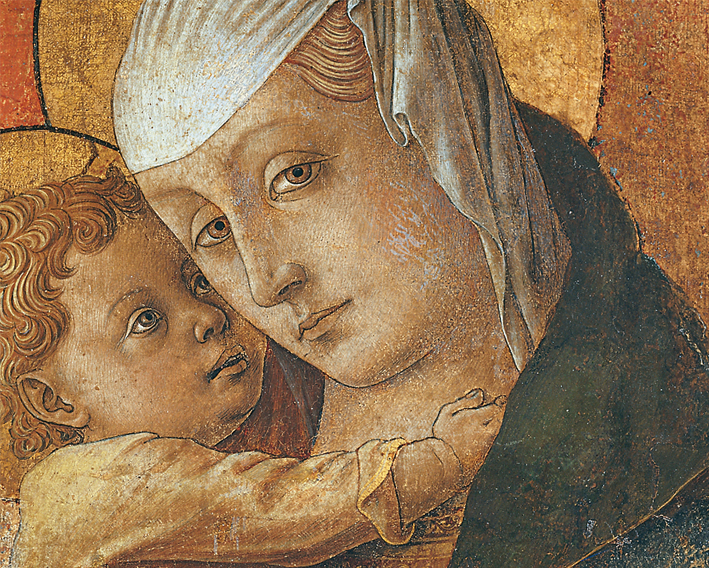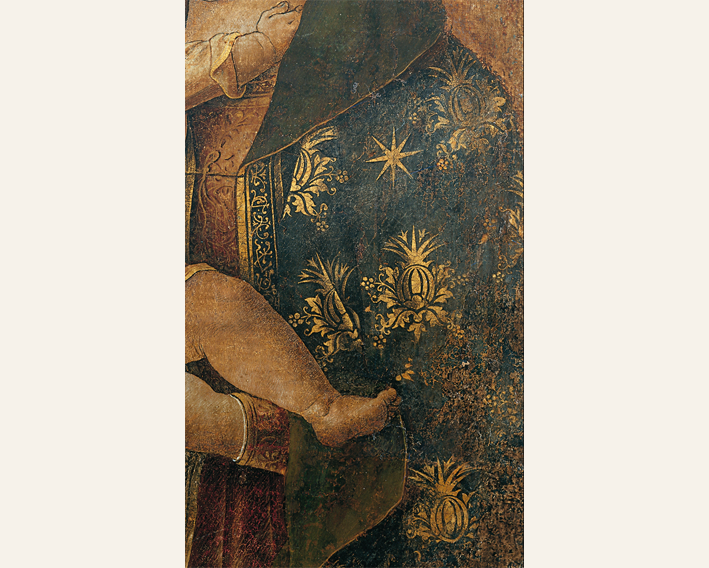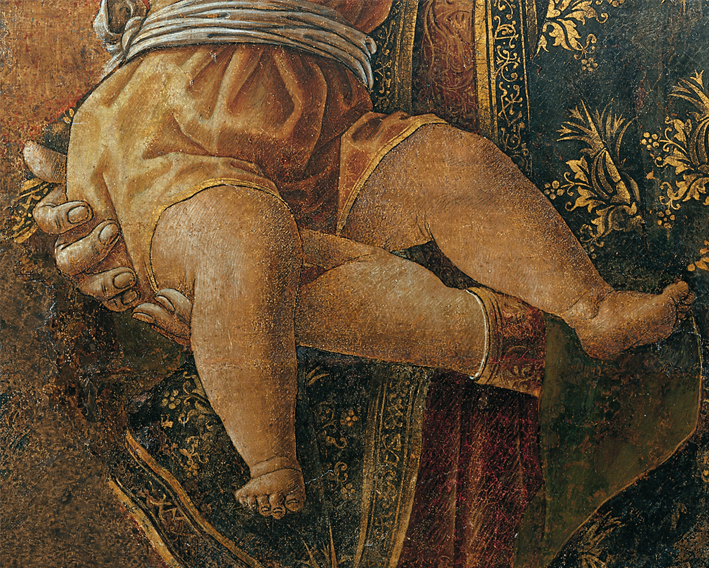Madonna and Child
We are looking at a canvas on which Carlo Crivelli painted a Madonna and Child. The work was originally intended to be larger, and alongside it—also preserved in the Civic Museums of Palazzo Buonaccorsi in Macerata—is a fragment inscribed with the words: “KAROLVS / CRIVELLVS / VENETVS / PINSIT / 1470 / FERMIS.”
In 1783, Luigi Lanzi described a Madonna enthroned between four saints, with a predella depicting some mysteries of the life of Christ, which ended at the top with the Eternal Father and bore the artist’s signature. This work was mentioned in the church of the Minori Osservati in Macerata (now Santa Croce), while it is known that in 1837 the Madonna and Child was located in the Town Hall, where it remained until 1867, when it was moved to the Art Gallery of the Municipal Library.
The canvas depicts a beautiful Madonna with her head covered by a white sheet that ripples, forming numerous folds. The woman gazes intently at the observer while holding the Child, who clings warmly to her neck.
The Virgin wears a blue cloak with gold decorations, tied at the chest with a small golden thread, which reveals an equally rich dress.
The Baby Jesus is depicted wearing an orange-colored dress, which is tied at the waist with a white sash.
The work was exhibited at the 2022 exhibition in Macerata, where it underwent restoration by Daphne De Luca. Her essay in that catalogue reveals numerous new details: the canvas has a dense weave and uniform thread, suggesting white linen; diagnostic analyses reveal a delicate preparatory drawing, possibly sketched in two stages; the preparation is very thin and consists of chalk mixed with oil; the gold in the halos was applied using the mission technique, i.e., with an oil–resin mordant, while the gold decorations on the clothes were applied using the shell technique.
Carlo Crivelli
Madonna con il bambino, 1470
Tempera e oro su tela, 59×40 cm
Musei Civici di Palazzo Buonaccorsi
Via Don Giovanni Minzoni, 24
Macerata (MC)
Madonna and Child
We are looking at a canvas on which Carlo Crivelli painted a Madonna and Child. The work was originally intended to be larger, and alongside it—also preserved in the Civic Museums of Palazzo Buonaccorsi in Macerata—is a fragment inscribed with the words: “KAROLVS / CRIVELLVS / VENETVS / PINSIT / 1470 / FERMIS.”
In 1783, Luigi Lanzi described a Madonna enthroned between four saints, with a predella depicting some mysteries of the life of Christ, which ended at the top with the Eternal Father and bore the artist’s signature. This work was mentioned in the church of the Minori Osservati in Macerata (now Santa Croce), while it is known that in 1837 the Madonna and Child was located in the Town Hall, where it remained until 1867, when it was moved to the Art Gallery of the Municipal Library.
The canvas depicts a beautiful Madonna with her head covered by a white sheet that ripples, forming numerous folds. The woman gazes intently at the observer while holding the Child, who clings warmly to her neck.
The Virgin wears a blue cloak with gold decorations, tied at the chest with a small golden thread, which reveals an equally rich dress.
The Baby Jesus is depicted wearing an orange-colored dress, which is tied at the waist with a white sash.
The work was exhibited at the 2022 exhibition in Macerata, where it underwent restoration by Daphne De Luca. Her essay in that catalogue reveals numerous new details: the canvas has a dense weave and uniform thread, suggesting white linen; diagnostic analyses reveal a delicate preparatory drawing, possibly sketched in two stages; the preparation is very thin and consists of chalk mixed with oil; the gold in the halos was applied using the mission technique, i.e., with an oil–resin mordant, while the gold decorations on the clothes were applied using the shell technique.




